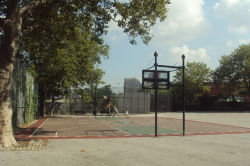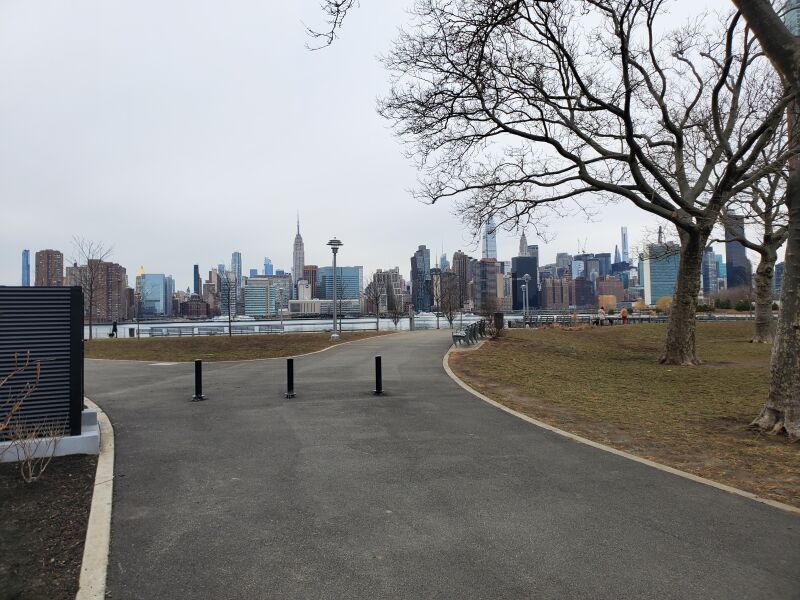Newtown Barge Playground
Newtown Barge Terminal Playground
Newtown Barge Terminal Playground was named for the barge canal terminal that once occupied the site. The Keskachauge Indians inhabited the surrounding region for centuries, before this property became a park or a barge terminal. When European mariners arrived, they called the entire peninsula “Greenpoint” because of a grassy bluff on the bank of the East River. The Dutch bought Greenpoint, including what would become Williamsburg and Bushwick-Ridgewood, from the Keskachauge in 1638 and named it Boswijck Township. A Scandinavian ship’s carpenter, Dirck Volckertsen, acquired Greenpoint from the Dutch in 1645. The land then passed to a Dutch military captain, Pieter Praa, and then to an inventor and industrialist, Neziah Bliss. For almost two centuries, the area was used primarily for farming and remained isolated from the rest of the region. At the time of the Revolutionary War, only five families lived in the Greenpoint area. Annetti Bennett, Pieter Praa’s daughter, and her husband Jacob, built the first house near the playground site, close to present-day Clay Street, between Manhattan Avenue and Franklin Street.
The first road was built in Greenpoint in 1838. Industrialization and an influx of residents soon followed. The area became known for shipbuilding, as well as for what were known as the five “black” arts: printing, glass and pottery making, oil refining, and cast iron manufacturing. By 1875, more than 50 oil refineries covered Greenpoint, Williamsburg, and Bushwick. Notable products from Greenpoint include the first ironclad warship, The Monitor, and much of the wrought ironwork still seen in front of Greenpoint houses today. Immigrants from Ireland, England, Russia, Italy, and particularly Poland flooded into Greenpoint during the late 1800s to work in the factories. As industry grew, so too did traffic along nearby Newtown Creek. By 1915, it became one of the busiest waterways in the country. More than 100,000 ships passed through the creek carrying more than 5 billion tons of cargo during that year alone. In response, the state of New York bought the land the playground now occupies in for the construction of a warehouse. Throughout the early 1900s, manufacturing and shipbuilding declined and by the end of World War II trucks and planes largely replaced waterborne transport.
The cities of Brooklyn, Williamsburg and Bushwick (which included Greenpoint) merged in 1854. All three became part of New York City when Brooklyn became a borough of the newly unified city in 1898.
Parks acquired this site in 1942. At its opening that same year, the park contained a wading pool, horseshoe pitches, and shuffle board courts. In 1972, about 4,100 square yards of surfacing was restored. More than 160 feet of chain-link fencing was replaced in the park the following year. Recently, the park has been the site of the Hispanos Unidos Water Festival and Hispanos Unidos of Greenpoint softball tournaments. The Greenpoint YMCA currently runs recreation programs in the park each summer.
Check out your park's Vital Signs
Clean & Safe
Green & Resilient
Empowered & Engaged Users
Share your feedback or learn more about how this park is part of a
Vital Park System




